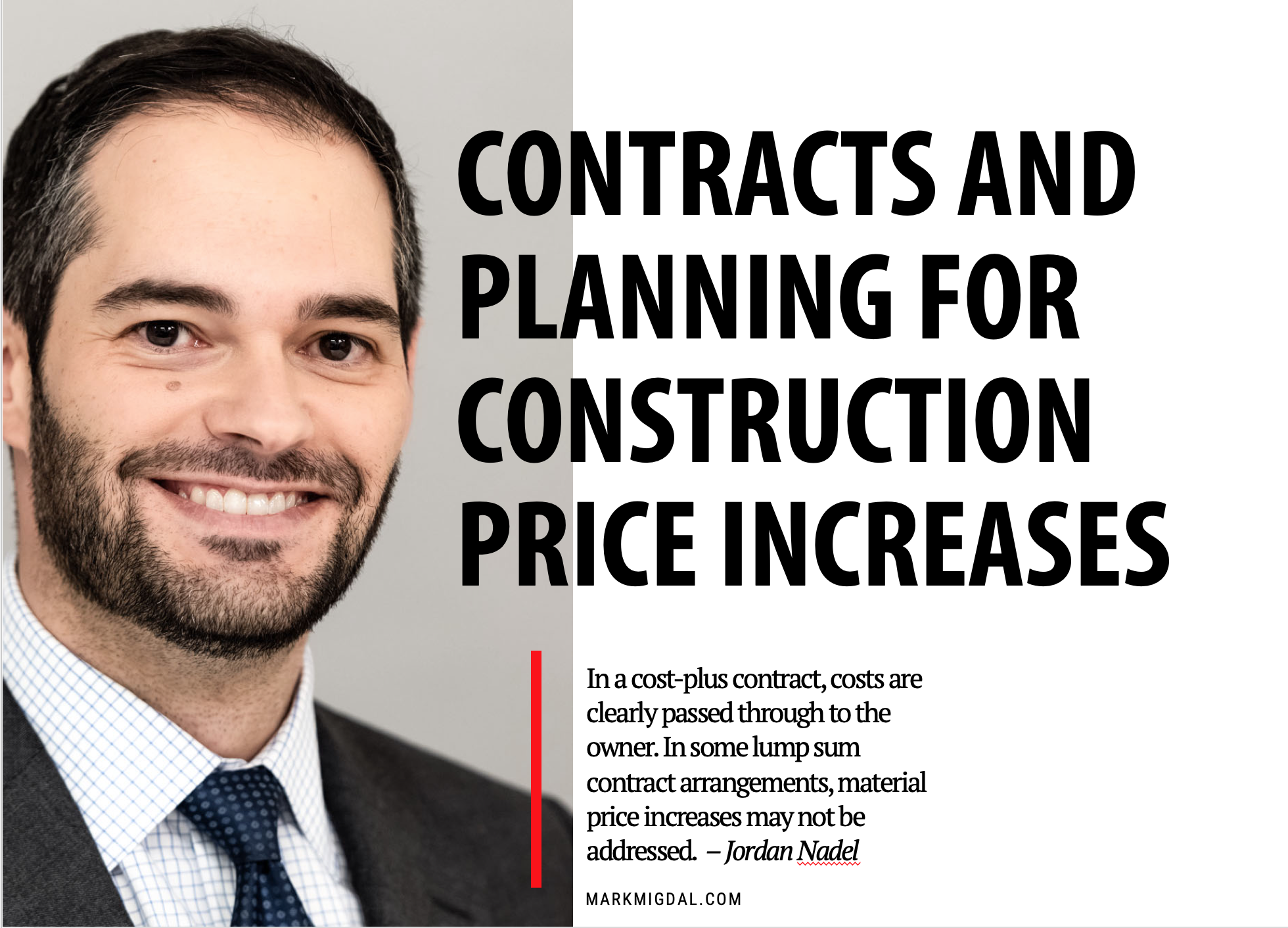Hindsight in 2022
Commercial Construction & Renovation | Jordan Nadel
October 27, 2022
Since the pandemic, supply chain issues and material price increases have been constant topics of discussion in the construction industry. On the one hand, the stakeholders on projects that commenced pre-pandemic find themselves contending with these ever-shifting market forces without contractual provisions specifically tailored to the current landscape. On the other hand, negotiations for new projects revolve around these considerations, as owners and contractors attempt to strike a mutually acceptable allocation of risk.
Read The Contract
If you are hit with material price escalations mid-project, the first thing you should do, whether you are a contractor or an owner, is to read the terms of the contract. Under certain project delivery methods, it may be readily ascertainable who will bear the increased project cost. For instance, under a cost-plus model, costs are clearly passed through to the owner. However, in a lump sum contract arrangement, material price increases may not be specifically addressed. In such circumstances, the owner is likely to argue that the stipulated lump sum insulates against a contract price increase due to material price escalations or other considerations. In response, the contractor must rely on general contract provisions, such as standard force majeure clauses, to hold an owner liable for these costs. The success of this type of strategy is fact-intensive and these positions are more likely to lead the parties to litigation or arbitration.
Regardless of the type of project or form of contract, transparency and communication will prove helpful in preventing litigation and mitigating claims at the completion of a project. To that end, a contractor intending to charge an owner for a material cost increase – particularly when the ability to do so is ambiguous under
the contract language – should provide notice to the owner as soon as possible. The advance notice may provide time to work towards an agreeable solution if the additional cost is disputed or otherwise problematic. Perhaps there is a substitute material that can be obtained at a lesser price or there is potential for a redesign that can dampen the impact of rising costs. Failing to timely address these issues can lead to problems during project close out.
Negotiate With Price Fluctuations in Mind
Today, when parties sit down to negotiate a construction contract, whether for a home remodel or a commercial high-rise building, material costs and supply chain issues are front and center. Luckily, there are ample tools for the parties to build in contractual protections that provide peace of mind as they proceed with a project. As a basic example, for cost-plus contracts, the parties can impose a guaranteed maximum price, as opposed to leaving the contract maximum price open ended. In stipulated sum contracts, the parties can treat items likely to be affected by material price fluctuations as allowances. Further, in any type of contract, the parties can draft contract provisions that specifically deal with material price escalations and any other contingencies arising from an uncertain market.
The more clearly a contract specifies the allocation of risk, the less likely a project ends up in litigation or arbitration. If the contract clearly makes one party responsible for a cost increase, there is less room for legitimate argument otherwise – and less incentive to incur attorney’s fees and litigation costs to advance a losing argument.
As negotiations play out, the parties are generally working towards a middle ground that provides some degree of flexibility with baseline protections in the event of unforeseen costs. What this arrangement looks like will vary from project to project and depend heavily on the needs and circumstances of the parties involved.





